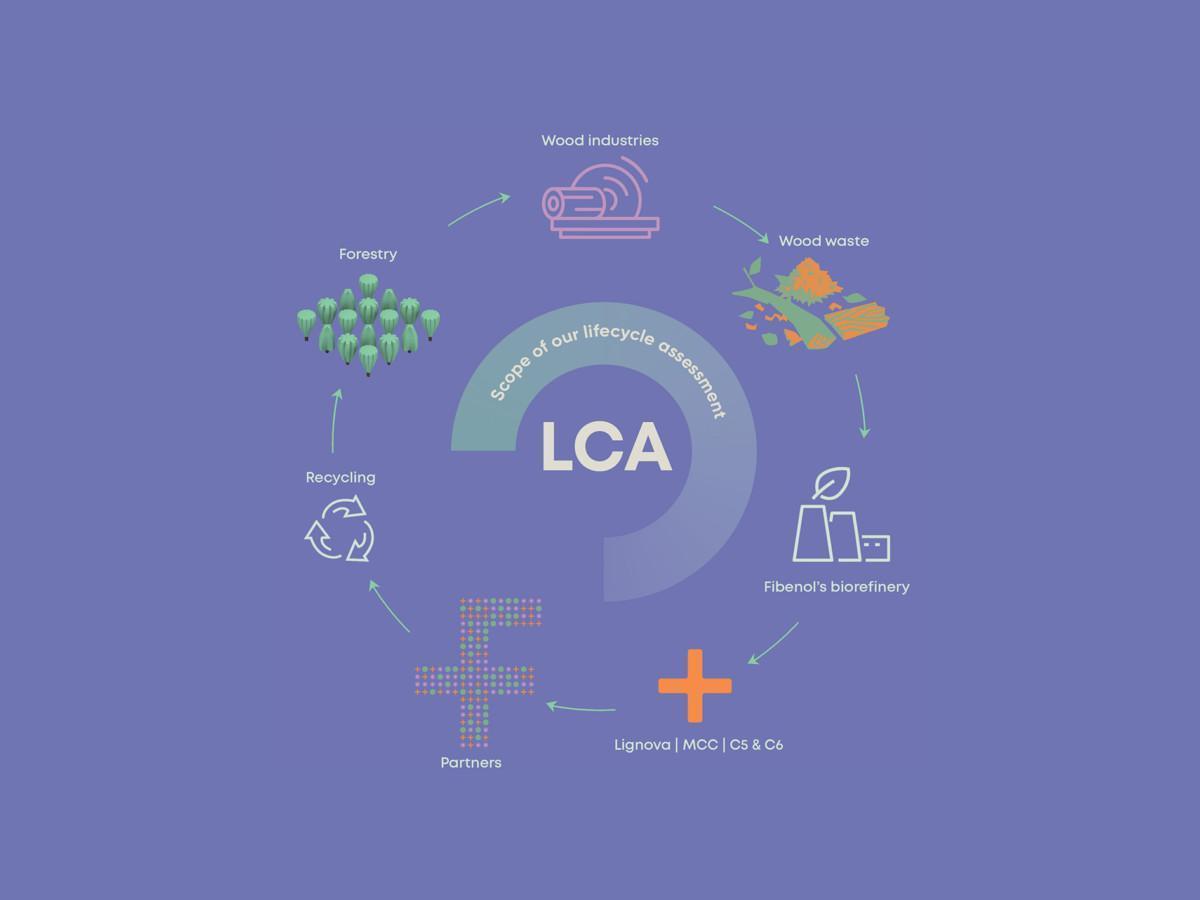Humankind is facing some of the biggest challenges in history. Climate change is still ongoing – global temperature rise, soil erosion, extreme weather events, ocean acidification and rising sea levels to mention a few. One of the biggest contributors to global warming is burning of fossil fuels that emit carbon dioxide, methane and other greenhouse gases to the atmosphere. In this stage, we don’t only need substitutions for fossil-based resources, but to rethink fundamentally.
We offer renewable products with minimal environmental footprint to move towards biobased circular economy. How we do it?
By valorizing locally generated forestry and wood industry residues that originate only from sustainably managed forests on average within 50 km radius. In addition to that, our innovative fractionation process will convert more than 90% of woody biomass into high-value products with minimal environmental impact as our plant runs 100% on renewable energy. To support our customers to make conscious choices, all our products are subject to evaluation of environmental performance also known as Life Cycle Assessment (LCA).
What is LCA?
LCA is a methodology which aims to quantify and evaluate the environmental impacts associated with a product, process, or service throughout its entire life cycle. Some of the most relevant aspects under consideration include water and land use, greenhouse gas emissions and energy consumption.
Life Cycle Assessment (LCA) of our fractionation process
The scope of our LCA covers forestry, wood processing and fractionation process itself – this is called cradle-to gate approach.
Cradle-to-gate means that LCA covers product life cycle from resource extraction (forestry, in our case) to our factory gate (selling our process outputs- cellulosic sugars, specialty celluloses and lignin).
Carbon neutrality
At the moment there are heated discussions on the topic of biogenic carbon accounting in LCA calculations. The bio-based products industry is fighting to include the biogenic carbon credit to the equation even though most standards and guidelines on LCAs do not support that. In general, to subtract the carbon credit in cradle- to-gate study the biogenic carbon must remain stored for more than 100 years. In our case, as the products have many different possible applications and the end-of-life phase is excluded from our LCA studies (cradle-to gate), accounting carbon credit would not be appropriate.
Results
The interpretation of carbon footprint depends on the definition of functional unit. For example, carbon footprint of our whole fractionation process is 201 kg CO2 eq based on 1 ton of dry input material (wood residues). To put it into perspective, yields form 1 ton of dry wood range from:
Lignin: 200-300 dry kg/t dry wood
C5 sugars: 300-400 dry kg/t dry wood
C6 sugars: 400-500 dry kg/t dry wood
Carbon footprint of each individual product depends on selected allocation method. As our products have possible applications in different sectors, 3 different allocation methods (economic, NCV and mass) are considered. If not specified, economic allocation is used. Values considering different allocation are presented as range:
Carbon Footprint kg CO2 eq/ton:
Lignin | 237…335
C5 sugars | 85…126
C6 sugars | 110…128
Besides carbon footprint, other environmental hotspots are also evaluated through contribution analysis. The biggest contributors to our environmental impacts are usage of enzymes and sodium hydroxide in our production.
These numbers are indicative and we are continuously developing our process to be more efficient, produce less waste and reduce the overall environmental impacts.
